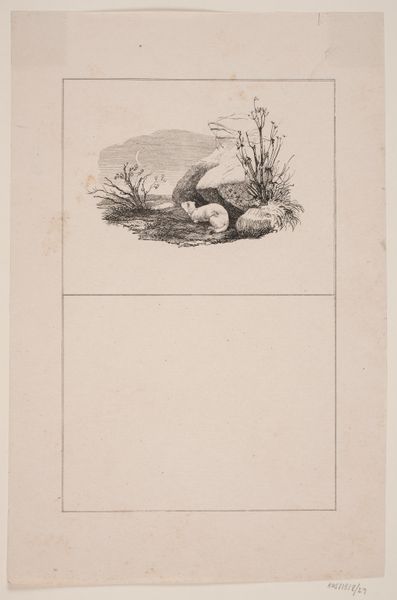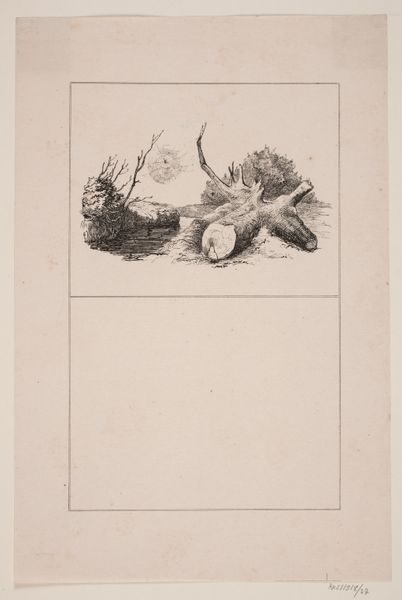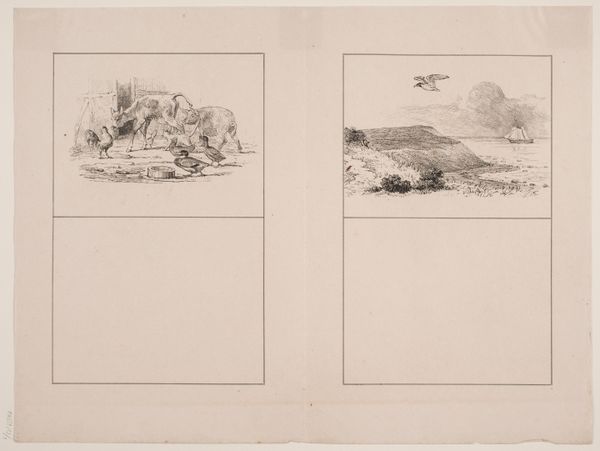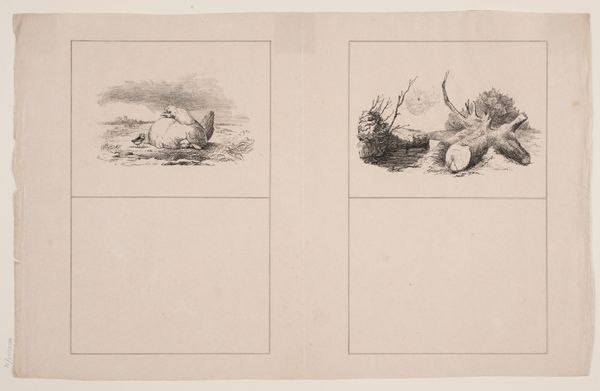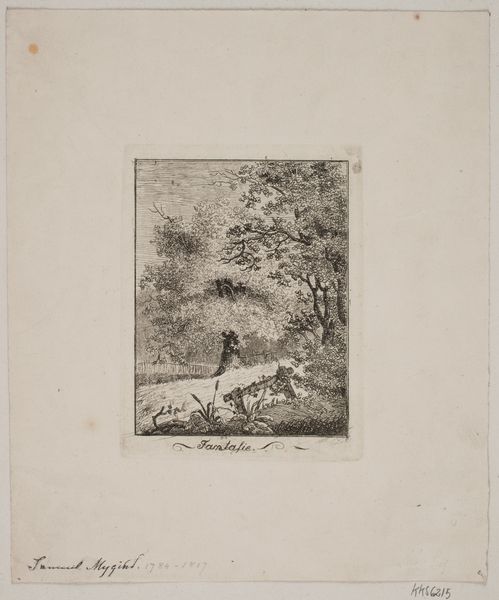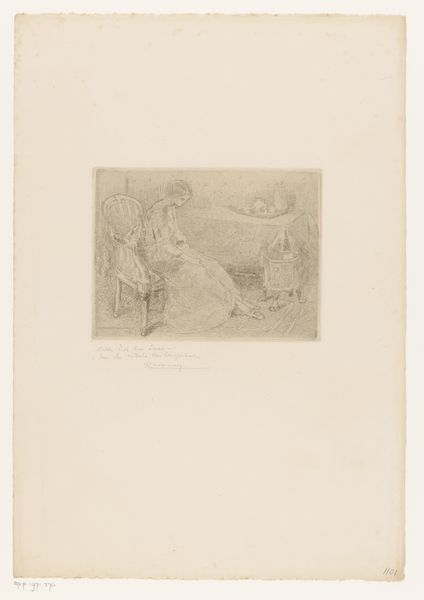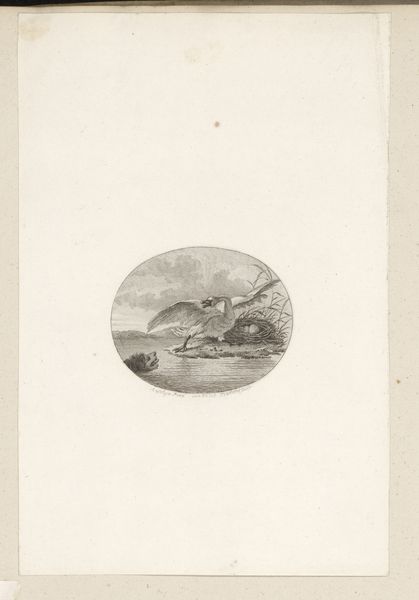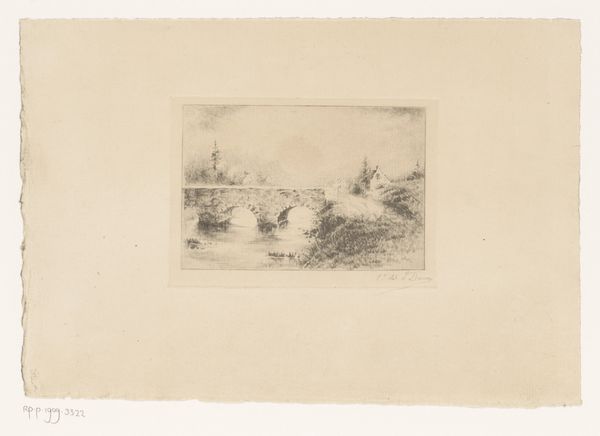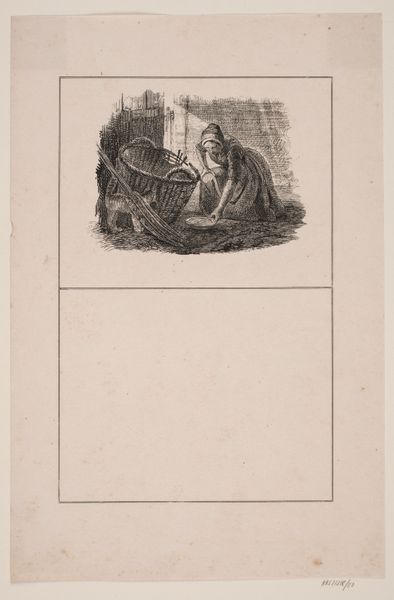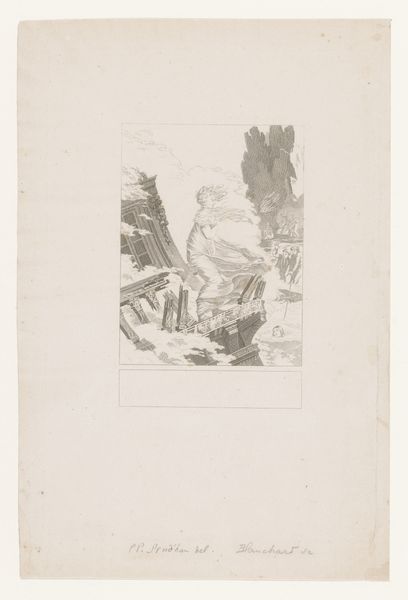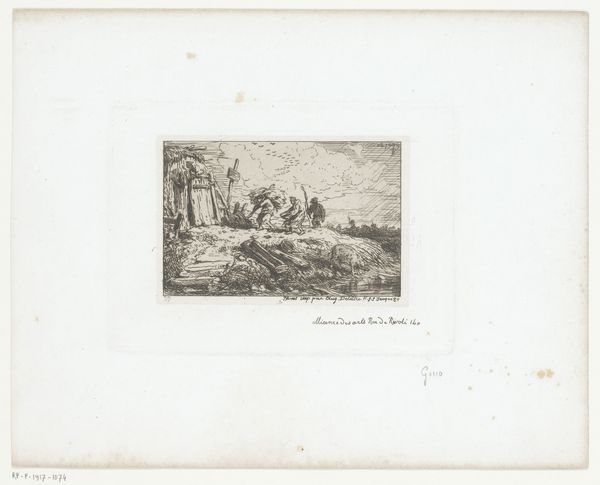
drawing, lithograph, print
#
drawing
#
lithograph
# print
#
landscape
#
pencil work
#
genre-painting
#
realism
Dimensions: 259 mm (height) x 173 mm (width) (bladmaal)
Curator: This is “Kyllingerne,” or "The Chickens," a lithograph from 1845 by Adolph Kittendorff. Editor: It’s quite endearing! The mother hen looks so incredibly plump and protective, almost comically so. The tiny chick adds to the charm; such simple lines capturing its youthful energy. Curator: Kittendorff worked during a time of growing national consciousness in Denmark. Genre scenes, like this one, that captured everyday life and local environments, resonated strongly. One wonders, then, if he's intentionally highlighting traditional family structure in a broader cultural dialogue. Editor: That could be it! Consider, too, the recurring motif of the hen and her chicks in art history. Across various cultures, the hen often represents fertility, nurturing, and maternal protection. Its universality might be intentional, reflecting basic human connections and our relationships with nature. Even the small background—are those ruins?— hint at enduring time. Curator: And that placement of the domestic against that older ruined scene is a powerful visual commentary on social hierarchy at that moment. Realism was a powerful tool to validate commoners and critique the nobility—as was the interest in rural landscape as opposed to courtly portraiture. Did he intend to democratize printmaking, extending social critique across a wider swathe of the populace? Editor: Interesting point! And look closer—it’s almost like the little chick is questing. Perhaps this captures the sense of responsibility but also concern inherent in parental protection? Curator: I agree, and thinking intersectionally, consider what images of nurturing look like. Is this reinforcing heteronormative images of family? Or can we understand it in ways that allow other identities to be mapped onto these images? It may not disrupt those categories explicitly but certainly expands our contemporary sense of the work itself. Editor: Thinking about symbols evolving over time, what Kittendorff presented in 1845 gains new meanings today. Even something as unassuming as chickens on a lithograph gives insight into enduring themes of family, protection, and identity. Curator: Precisely. Situating artworks in their period and also today makes space to consider power and meaning, not only for the artist but for us, too.
Comments
No comments
Be the first to comment and join the conversation on the ultimate creative platform.

